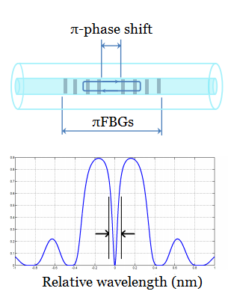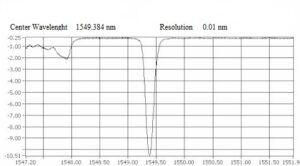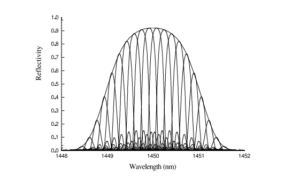Distributed fiber optic sensing is tested through practice technology for online monitoring of temperature, strain, vibration, and sound over long distances with the high local resolution that is apt to improve pipeline integrity, pipeline safety, and security considerations. Fiber optics distributed temperature sensing techniques have found applications in various domains such as civil engineering, oil, and gas, power plants, fire detection, etc.
Pipelines are the most modern, effective, and reliable global transport systems for oil, gas, and water. In order to guarantee the smooth transport of products the pipeline systems must be regularly maintained and monitoring. Optical sensing systems today facilitate pipeline monitoring and integrity as preventive means to continuously protect or monitor pipelines. The systems are based on interferometric sensing where ultra-stable, low noise lasers interrogate an optical fiber acting as one long continuous sensor embedded or attached to the pipeline. The monitoring of temperature profiles over long distances by means of optical fibers represents a highly efficient way to fiber optic leak detection along pipelines, in dams, dikes, or tanks. Different techniques have been developed taking advantage of the fiber geometry and of optical time-domain analysis for the localization of the information.
Distributed temperature sensing is used in all cases to improve the performance of computational monitoring systems. Although distributed temperature sensing is a well-proven technology that has shown to be able to detect very small leaks in a short time, it is very hard to calculate the minimum detectable leak size or to guarantee a maximum detection time which in many cases are necessary to receive pipeline operation licenses. Leak rates as low as 50 ml/min have been detected on a brine pipeline by temperature monitoring and identification of local temperature anomalies.
GeoHazards like earthquakes, landslides, and surface subsidence result in ground movement and thus put additional stress on the pipelines, tunnels, and other underground infrastructures. Structural health monitoring is a promising and challenging field of research in the 21st century. Civil structures are the most precious economic assets of any country, proper monitoring of these are necessary to prevent any hazardous situation and ensuring safety. Fiber Bragg Grating (FBG) sensors have emerged as a reliable, in situ, nondestructive device for monitoring, diagnostics, and control in civil structures. FBG sensors offer several key advantages over other technologies in the structural sensing field.
The transformer is the key equipment in a power system, to ensure its safe and stable operation is important. Transformers either raise a voltage to decrease losses or decreases the voltage to a safe level. The failures of transformers in service are broadly due to temperature rise, low oil levels, overload, poor quality of LT cables, and improper installation and maintenance. Out of these factors temperature rise, low oil levels and overload, need continuous monitoring to save transformer life. A DTS system increases the reliability of the distribution network, by monitoring critical information such as oil temperature, and the oil level of the transformer. Data are collected continuously. Monitoring the transformers for problems before they occur can prevent faults that are costly to fix and result in a loss of service life. With modern technology, it is possible to monitor a large number of parameters of a transformer monitoring system at a relatively high cost. At the present day, the challenge is to balance the functions of the monitoring system and its cost and reliability.


 Nowadays, the special type of FBGs whose reflection spectrum has a notch arise from a π-phase discontinuity in the center of the grating (called
Nowadays, the special type of FBGs whose reflection spectrum has a notch arise from a π-phase discontinuity in the center of the grating (called 
 Fiber Bragg Gratings is one of the most meaningful developments in the areas of optical fiber technology, due to their flexibility and unique filtering performance. FBG is defined as the key component in dense wavelength division multiplexing on the basis of their low insertion loss, high wavelength selectivity, low polarization dependent loss, and low polarization modal dispersion.
Fiber Bragg Gratings is one of the most meaningful developments in the areas of optical fiber technology, due to their flexibility and unique filtering performance. FBG is defined as the key component in dense wavelength division multiplexing on the basis of their low insertion loss, high wavelength selectivity, low polarization dependent loss, and low polarization modal dispersion.